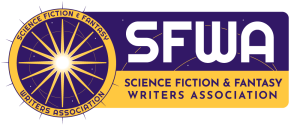by Susan Forest
 Backstory is tricky to interweave into your story effectively. Sometimes, it is introduced too soon, or all at once in one large info-dump. At other times, its power is undercut by giving it away for free before the reader has been primed to hunger for it, or by failing to take advantage of the motivating power of shameful secrets.
Backstory is tricky to interweave into your story effectively. Sometimes, it is introduced too soon, or all at once in one large info-dump. At other times, its power is undercut by giving it away for free before the reader has been primed to hunger for it, or by failing to take advantage of the motivating power of shameful secrets.
When and how can backstory be feathered in effectively? Think of it as a series of skeletons in the closet your protagonist does not want to reveal, then analyze your piece for optimal timing, setting and delivery method.
But first, what is backstory? According to Robert McKee in his classic book Story, backstory “doesn’t mean the (character’s) life history or biography. It is the set of significant events that occurred in the character’s past that the writer can use to build his [or her] story’s progressions.” Note: significant events. Used to build the story.
Because backstory is not story it can be dull or confusing, and inserting too much too soon can stop a story dead in its tracks. This is the part of the novel many people skip. Although backstory is critically important to the author, who must know his or her characters thoroughly, the reader only needs sparing, critical details–enough to ensure the character’s motivation is clear. These hints can also serve the purpose of whetting the reader’s appetite to find out more: you can reveal as much backstory as you like, if you have primed the reader to want it.
But backstory does not need to be dull. It can deepen character internal conflict, and be a springboard into story action. Used well, it can be emotionally powerful.
How is this accomplished? According to Robert McKee, if it is not to be stagnant, each scene in a story needs to show a change in some value: love, justice, loyalty, freedom–your choice. For example, a scene can begin with a character in a positive value with regard to money (i.e. he just got paid) and can end in a negative value with regard to money (i.e. an overwhelming bill arrives). A scene can progress from negative to positive as well. And, McKee contends, that change can only be accomplished in one of two ways: through action or through revelation of backstory. He writes: “If, for example, we have a couple in a positive relationship, in love and together, and want to turn it to the negative, in hate and apart, we could do it on action: She slaps him across the face and says, ‘I’m not taking this any more. It’s over.’ Or on revelation: He looks at her and says, ‘I’ve been having an affair with your sister for the last three years. What are you going to do about it?’ Powerful revelations come from the backstory–previous significant events in the lives of the character that the writer can reveal at critical moments to create turning points.”
Donald Maass points out that secrets, shame and regret are powerful motivators–his book, Writing 21st Century Fiction, provides considerable detail on this topic and is highly recommended.
One way to implement the idea of using backstory secrets to fuel your story is to create two story lines: the current story, and the backstory; then note places in your current story where a powerful secret can be revealed to provide the motivation for a character to take the action required by the plot.
Here is an example: in a historical fantasy, a young woman appears, alone, in the city knowing no one; due to cultural expectations, it is assumed she has left home because she is pregnant out of wedlock and an embarrassment to the family. She gets swept into the political story of war and rebellion, while her driving goal is to be reunited with her son. Now, generate a series of backstory secrets that could be revealed at key points: (1) though she is not pregnant, she did have a child, whom she abandoned; (2) the child was fathered by an important man who promised to leave his barren wife; (3) the woman was forced to work for the man and his wife, hiding her pregnancy; (4) she tried to abort the baby; (5) she was forced to give her baby to the wife who pretended her own pregnancy; (6) the woman stayed on as wet nurse (7) the woman killed her lover, the child’s father, when he told her his wife no longer needed a wet nurse; (8) the child witnessed the stabbing his father. Each of these is a shocking, shameful secret the woman would never want revealed. Would all of these be used? Perhaps not–such choices would depend on the needs of the central story. But there are plenty of backstory secrets that could be used to heighten drama or to illuminate motivation, if revealed at the right moment.
For most effective use of this device, a few tips should be kept in mind. First, characters are loathe to reveal their backstory secrets. Such shameful secrets must be forced from them: do not give them away for free (“Sonny, let me tell you about my past”). Second, the power of the reveal can be increased by your choice of who does the reveal: your protagonist? A friend? An enemy? Under what circumstances can this character be forced to spill the beans? Third, choose an evocative location for the reveal. Kitchens, offices and restaurants have little resonance; a setting with personal emotional history for your characters can boost the strength of the scene.
Make your audience hungry for backstory and deliver it at just the right moment. Used well, backstory can be a powerful tool.
•••
Two-time Prix Aurora Award finalist (and current nominee), Susan Forest is a writer of science fiction, fantasy and horror. You can find her stories in Analog, Asimov’s, OnSpec, Blood and Water, Beneath Ceaseless Skies, Tesseracts, AE Science Fiction Review, and The Urban Green Man, or in her collection, Immunity to Strange Tales (Five Rivers Press). Susan edits for Edge Press, as well as freelance, and has served as a judge for the Robin Herrington and Endeavour writing contests. She has worked as a guest lecturer or artist-in-residence at many local schools, and teaches several creative writing courses for the Alexandra Writers Centre Society. She is currently Secretary for SFWA, and has been a panelist at local, national and international conventions. Check out her website: www.speculative-fiction.ca.
